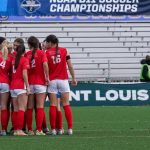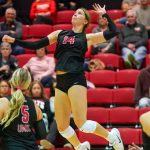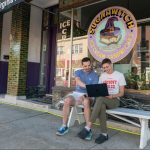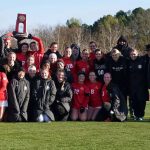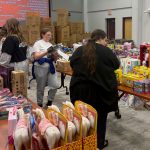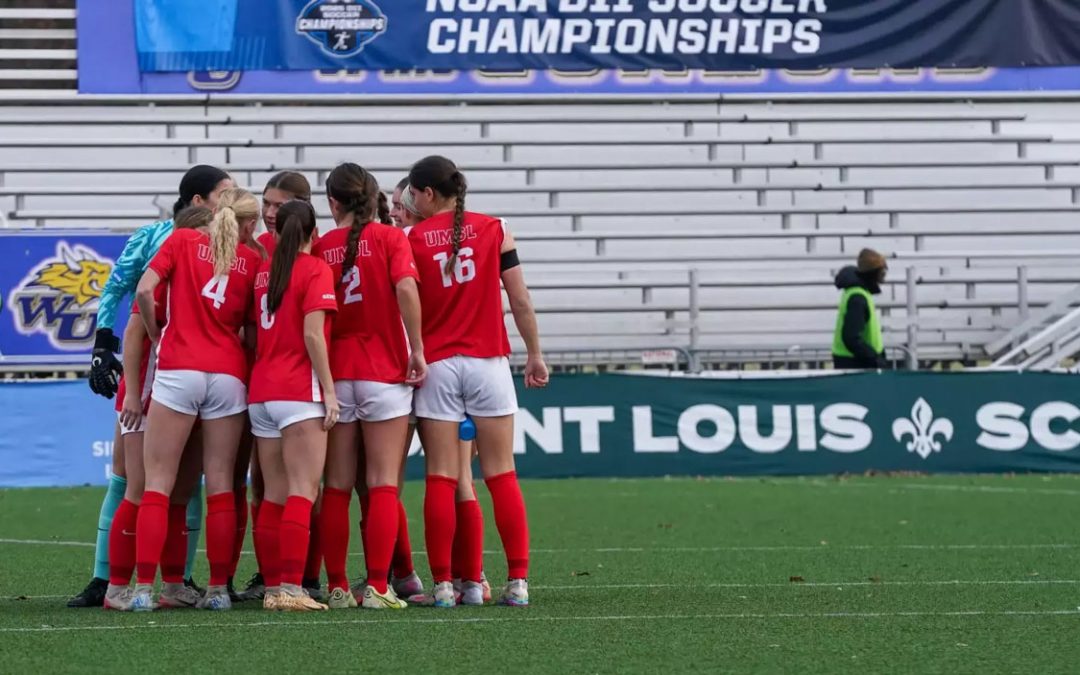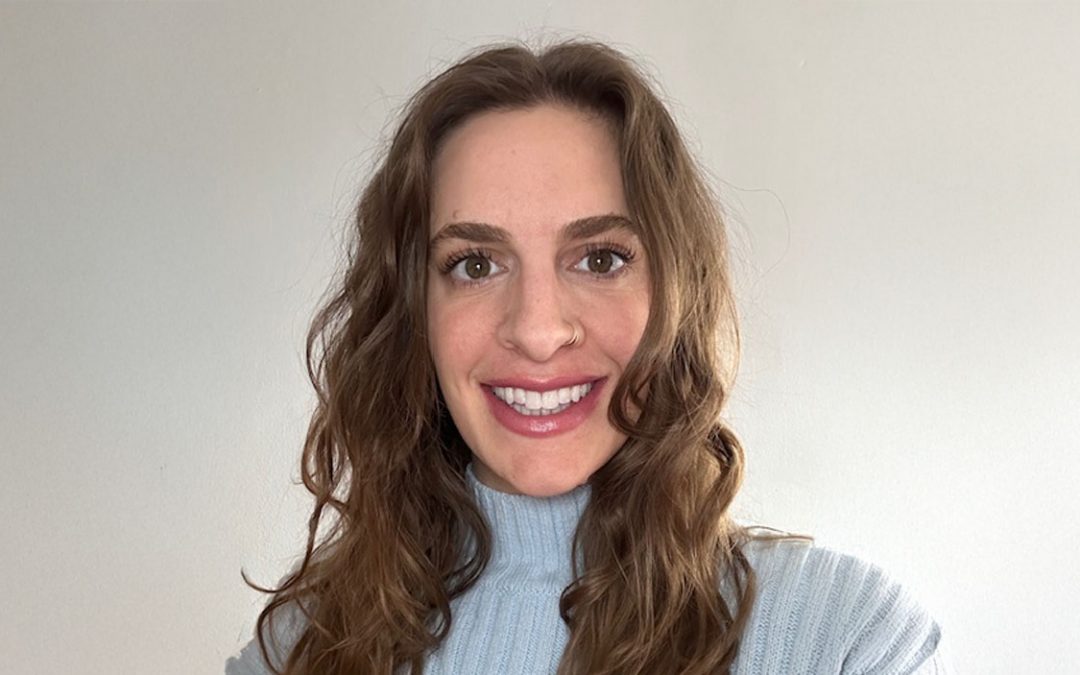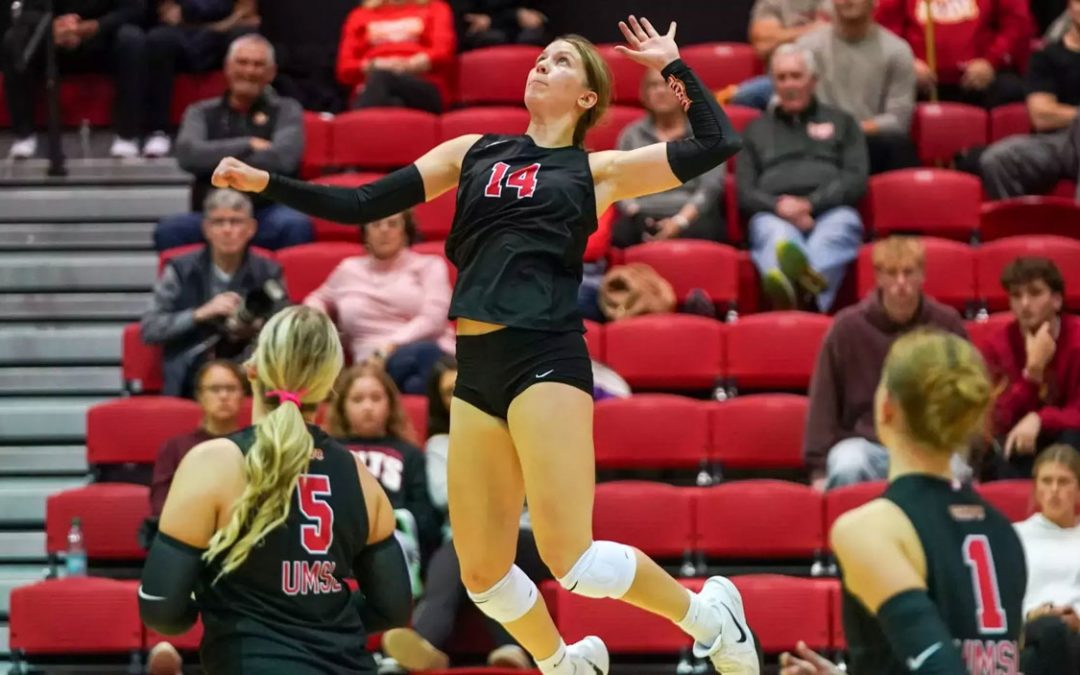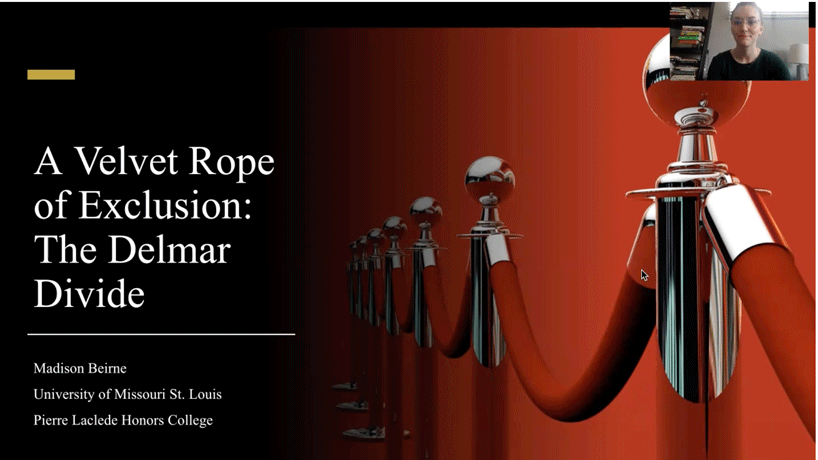
Education major Madison Beirne (upper right corner) conducts an online presentation of “A Velvet Rope of Exclusion: The Delmar Divide” during the 2021 Undergraduate Research Symposium. (Screenshot)
Normally, University of Missouri–St. Louis research students set up their exhibits for the Undergraduate Research Symposium all together in the rotunda of the Millennium Student Center. This year, each of the student researchers presented their body of work in their own individual digital space.
The scholars hosted their online guests utilizing Microsoft Teams, allowing those logged in to browse slides, presentations and videos before interacting with the students through direct messaging, live chats and video conferencing.
Creating a digital format to showcase undergraduate research, scholarship and creative works presented challenges to both faculty and students, but organizers said it didn’t lessen the student’s enthusiasm to present their research. More than 50 projects were presented by 70 students who were sponsored by about 30 faculty members.
“I am just really impressed at the level of commitment to research and the public forum that these students and their mentors have shown this year,” UMSL Assistant Teaching Professor and Undergraduate Research Coordinator Kate Votaw said. “Not only is it pretty much impossible to physically get together to do research, everyone’s bandwidth is stretched thin. Despite that fact that the URS is digital – which is just not nearly as rewarding of an experience as being able to present in person – we actually have close to an average number of projects this year.”
The student research projects ranged from societal to scientific. Research topics included: The Relationship between Resilience, Stress and PTSD, LGBTQ+ Diversity Training for Corporations, Cahokia Alive, Women in STEM Fields, German Resistance During the Third Reich, Curcumin: An Agent to Fight Sepsis, Radioactive Waste Management, and Development of a Biocompatible Carrier for a Study of pH Response Drug Release.
Kaleb Bolen presented his project, “The Portrayal of Jews in Nazi Propaganda and Art,” which examined the negative ways that Jewish people have been portrayed through stereotypical depictions and how people consider those incorrect depictions to be true.
He felt comfortable sharing his work in the digital space. He said presenting online and interacting one-on-one as people came into his room was easier than presenting to groups of people in person.
“Even though I would love to meet everyone in person – that would be preferable – there’s obviously safety concerns,” said Bolen, who is a sophomore studying marketing. “But I think this makes things easier in some ways. So you can just log into my room. Just talk to me, we can have a conversation and just be one-on-one. If there’s a ton of people coming in at once, I might want to discuss more with you, but I don’t have enough time. It makes it more focused.”
For many of the student presenters, the focus was on the research itself.
Madison Beirne, who is majoring in elementary education with an emphasis in teaching English to speakers of other languages, studied the impact of St. Louis’ racial segregation on the public school system in her presentation “A Velvet Rope of Exclusion: The Delmar Divide.” Beirne said her undergraduate research project gave her a foundation for graduate research.
“As I move into graduate school, I have research experience to tap into and more questions to ask that are aligned with my interests,” Beirne said.
Participating in the URS also helped Beirne connect with UMSL professors and gain valuable life lessons.
“Each undergraduate works with a professor who mentors their research process. In some cases, the undergraduate is partnering with a professor and getting real-world experience,” she said. “I learned important skills in this process that I might not have acquired otherwise. It takes a lot of work, time and energy to research a topic, and then you present your work to others for feedback. There’s authenticity and true engagement that comes from that.”
Chancellor Kirstin Sobolik, who spoke briefly before symposium participants broke off into rooms, recalled how engaged she was in her own student research project while studying biology at the University of Iowa.
“If you’ve ever seen pollen on the scanning electron microscope, it’s gorgeous,” Sobolik said. “And those beautiful pictures that I still have in my file, I use today. And it allowed me then to move on into graduate school, where I ended up analyzing pollen from archaeological sites to take a look at environmental change through time. So I love pollen. I love undergraduate research. And I’m so proud of our undergraduate researchers that are here today.”


